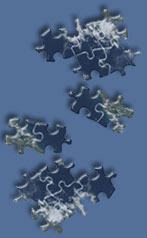
South Africa 2009

SA2009 home page
Location
Agenda (html OR pdf)
Lecturers
Participants (PDF)
Software
Pictures
Sponsoring Institutes
DBS home page

Lecturers
- Dr. Hung-Lung Allen Huang also known as Allen Huang, is a distinguished scientist of the University of Wisconsin-Madison and a fellow of International Society for Optical Engineering (SPIE). A Member of Space Studies Board Committee on Earth Studies, The National Academies and an Adjunct professor of many universities. Dr Huang received his M.S. and Ph.D. degrees from the Meteorology Department of the University of Wisconsin, Madison. He is currently working in Space Science and Engineering of University of Wisconsin-Madison conducting remote sensing research in the areas of atmospheric sounding retrieval, information content analysis, satellite and aircraft high-spectral resolution sounding instrument data processing, data compression, instrument design and performance analysis, cloud-clearing, cloud property characterization, synergistic imaging, and sounding data processing and algorithm development. Dr. Huang also advises and supports both national and international M.S. and Ph.D. students and visiting scientists. So far he has given 58 invited and international lectures and seminars and conducted 5 remote sensing training workshops.
- Mr. Liam Gumley joined the Space Science and Engineering Center (SSEC) in 1994, where he has played a key role in the MODIS Atmosphere Science Team for the past 15 years. Previously he was a senior scientific programmer at NASA Goddard Space Flight Center from 1991-1994. He has been associated with the NASA MODIS program since 1991, when he developed the first data processing software for the MODIS Airborne Simulator. As part of the MODIS group at SSEC, he developed significant portions of the operational MODIS cloud mask, atmospheric profiles, cloud top properties, clear sky radiance, and image destriping algorithms. He has played a major role in providing software for MODIS Direct Broadcast (DB) data processing to the global community via the International MODIS/AIRS Processing Package (IMAPP). He has been a Principal Investigator on the MODIS Science Team where he led a successful effort to provide real time MODIS products to users including the US National Weather Service. He is the manager of the EOS DB facility at the University of Wisconsin-Madison, and architect of the SSEC real-time automated processing system for MODIS and AIRS. He is the author of “Practical IDL Programming” (Morgan Kaufmann Publishers, 2001), a widely used guide to programming and data analysis in Interactive Data Language (IDL). He received his MS in 1990 from the University of Wisconsin-Madison (Meteorology) and a BS in 1988 from Curtin University of Technology (Physics).
- Ms. Kathleen Strabala has been a Researcher at the Cooperative Institute for Meteorological Satellite Studies for over 15 years. She received a masters degree in Meteorology from the University of Wisconsin-Madison, USA in 1991. She worked as a Senior Forecaster at Kavouras, Inc., in Minneapolis, Minnesota, USA for 3 years prior to receiving her degree. She has worked primarily on cloud detection and cloud composition as determined from MODIS, and has been an author or co-author on many publications, including Menzel, Frey, Zhang, Wylie, Moeller, Holz, Maddux, Baum, Strabala and Gumley, 2008: "MODIS Global Cloud-Top Pressure and Amount Estimation: Algorithm Description and Results", Journal of Applied Meteorology and Climatology, Vol. 47, 1175-1198. Kathy is the project manager for the International MODIS/AIRS Processing Package (IMAPP) which provides software to create science data products from direct broadcast reception of Aqua and Terra data. The software is freely distributed and is used by direct reception sites around the world.
- Mr. Philip Frost received a BSc degree in Geography from the University of Pretoria 1998, as well as an HONORS degree in GIS from University of Pretoria in 2000. Started working at the Agricultural Research Council in 1999 as a junior researcher in remote sensing. Developed a new NOAA AVHRR processing system and reprocessed the Southern African AVHRR data set (1985 to 2000). He got involved in fire research after the 2001 Kruger Park Fire disaster that claimed 23 lives. Moved to the CSIR (Council for Scientific and Industrial Research) in 2002 working at the Satellite Application Centre (SAC). In 2003 SAC purchased a MODIS DB station and he got involved in MODIS product development. They started the development of the Advanced Fire Information System (AFIS) in collaboration with Eskom (the national power utility) in 2004 and also included MSG geostationary fire information. In 2005 he moved to the Meraka Institute where he is now focussing on Earth Observation fire research.